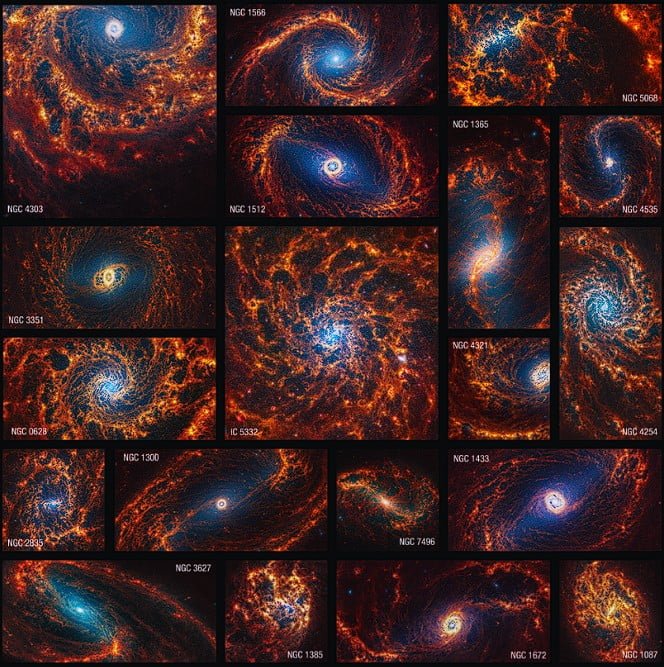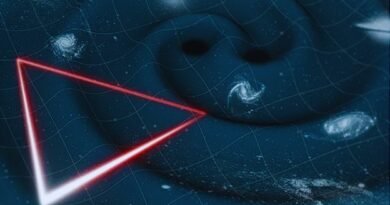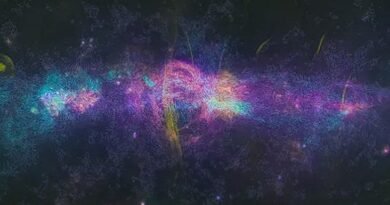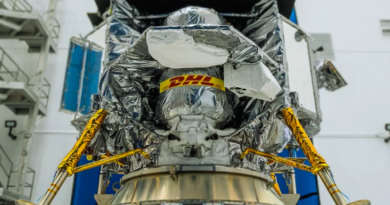James Webb Telescope Reveals 19 Spiral Galaxies in Unprecedented Detail

The James Webb Telescope astounds with mind-blowing images, showcasing 19 spiral galaxies in the greatest detail ever captured, marking a significant leap in astronomical observation.
The James Webb Space Telescope (JWST) has recently unveiled mesmerizing, high-resolution images of 19 distant spiral galaxies situated beyond our Milky Way. This state-of-the-art $10 billion telescope offers an unprecedented glimpse into the cosmic tapestry, showcasing intricate patterns of gas and dust in these celestial realms. These remarkable images not only provide a new perspective but also underscore the individuality of each galaxy, emphasizing their unique characteristics.
As part of the Physics at High Angular Resolution in Nearby Galaxies (PHANGS) program, these images focus on the structures of gas and dust within galaxies, offering valuable insights into the star formation processes of spiral galaxies, akin to our Milky Way. The Mid-Infrared Instrument (MIRI) captured vibrant orange lanes of dust, unveiling details on the smallest observable scales. Simultaneously, stars in the early stages of formation appear as distinctive red “seeds” on dust lanes.
The JWST’s Near-Infrared Camera (NIRCam) skillfully portrays mature stars as brilliant blue jewels, scattered through orange gas and dust lanes. The images highlight hot blue stars, some forming clusters, and others dispersed across their home galaxies. Additionally, voids within gas and dust lanes, potentially created by exploding stars, were identified by the powerful space telescope.
NGC 5068, a galaxy prominently featured in the images, appears to be characterized by substantial voids. The telescope adeptly traces the spiral arms, revealing extended regions of glowing gas and dust. These spiral structures, likened to waves, offer crucial insights into how galaxies distribute their gas and dust, influencing the intricate process of star formation.
The dynamic and vibrant appearance of spiral arms takes center stage in the JWST image of NGC 628, where they seem to radiate gas and dust like vivid orange splashes. Some galaxies exhibit distinct pink-and-red diffraction spikes, potentially signaling the presence of supermassive black holes or intensely bright star clusters towards the center.
Importantly, the images suggest a fascinating growth pattern for galaxies, originating from their cores and expanding outward. This implies that younger stars are situated further from the core, while ancient stars cluster at the heart of the galaxy. The level of detail captured in these images has left researchers astounded, underscoring the JWST’s groundbreaking capabilities in advancing our understanding of distant spiral galaxies.








